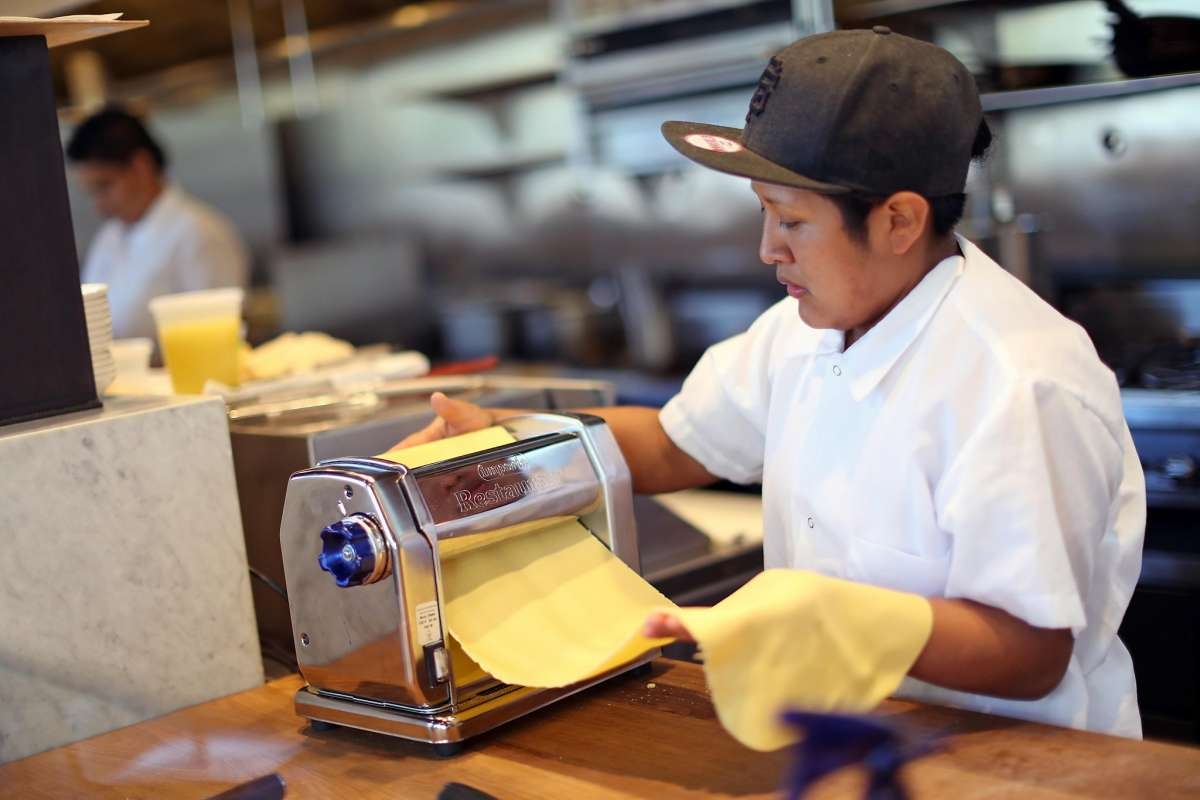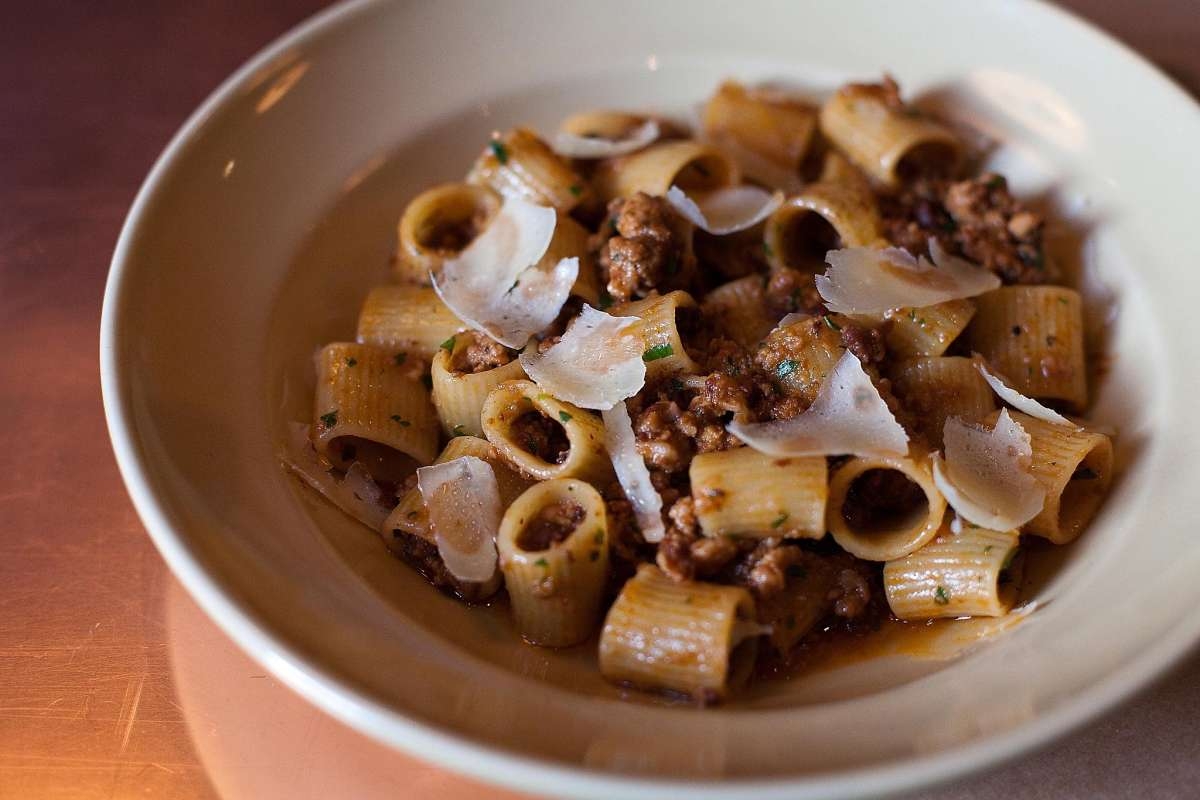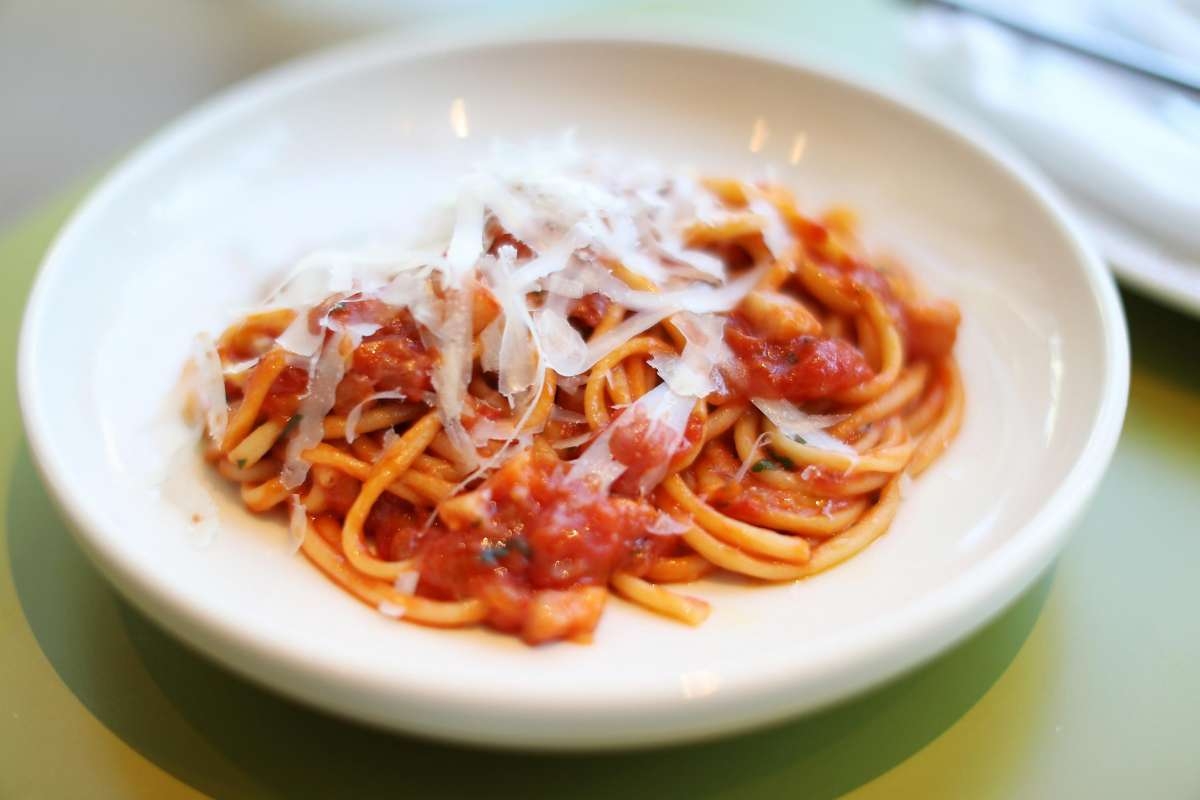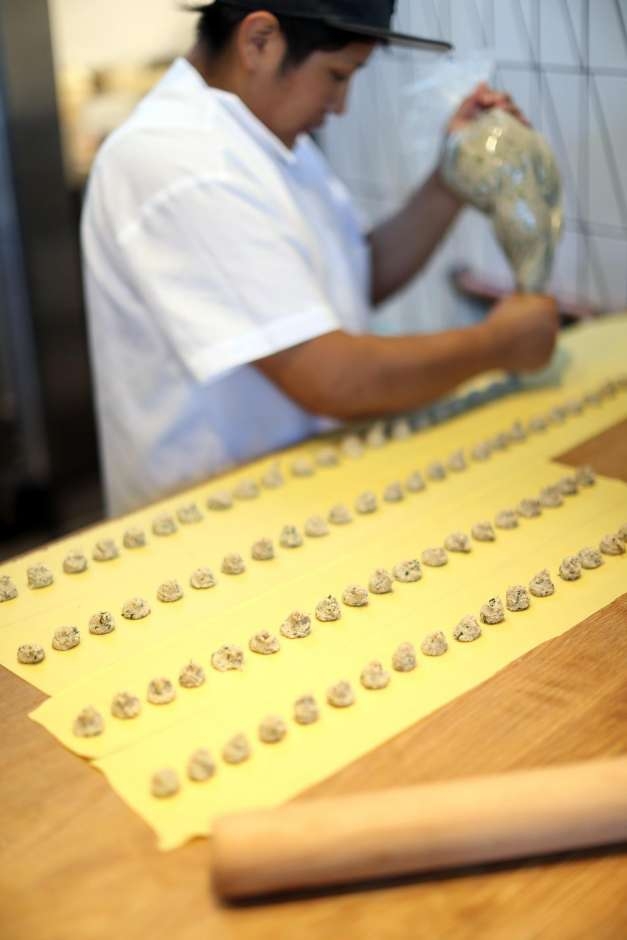SAN FRANCISCO CHRONICLE
Meet the San Francisco man that supplies pasta machines to restaurants
By TARA DUGGAN, November 2, 2018

Lydia Juarez makes agnolotti pasta at A Mano in S.F. The restaurant uses three pasta makers from Emilio Mitidieri’s import business. Credit Scott Strazzante/The San Francisco Chronicle
Italian food is so integral to Bay Area dining culture that it’s difficult to imagine it having ebbs and flows. Yet Emilio Mitidieri says local interest in house-made pasta is at a high point, the fifth in his career as a purveyor of professional pasta machines and other Italian tools.
“We can’t keep up,” he says of the demand for the latest, fastest, most expensive pasta making machines from chefs not only in San Francisco, but in Montreal, New York and Mexico City. “Because of media influence, everybody is looking at what everybody’s doing. Instagram is really important.”
Owner of EmilioMiti, which has a showroom in the Mission, Mitidieri has been in the pasta-maker import business since 1979 in San Francisco, where he has watched handmade pasta trends go through 10-year cycles. He attributes the current peak partly to the excitement around the Italian food emporium Eataly, which has five U.S. locations. It’s also due to an ongoing passion for making things — for example, at San Francisco’s A Mano, which means “by hand” in Italian, which has three different pasta makers and makes all pasta in house.

House-made mezze maniche with suckling pig ragu at Cotogna in S.F. made with an imported Italian pasta maker. Credit David Paul Morris/Special to The Chronicle
It’s good to point out, though, that the most popular machines are the most automated, not the hand-cranked metal rollers that many home cooks attach to their cooking islands. EmilioMiti’s bestseller is the Nina 250 from the Italian manufacturer Imperia & Monferrina, which can cost up to $5,000. It quickly transforms a ball of dough into pristine sheets that are 250mm (about 10 inches) wide. Other attachments cut the sheets into pappardelle or turn it into ready-to-slice ravioli, while an extruder makes spaghetti and other round, long shapes.
Mitidieri points to pasta influencers on Instagram like Linda Miller Nicholson (@saltyseattle), a cookbook author who makes whimsical rainbow-hued creations with plant dyes, and Missy Robbins, chef of New York restaurant Lilia. When she shares photos of her mafaldine, long curly noodles with ruffled edges, or corzetti, flat, round pasta shapes stamped like coins, Mitidieri says chefs call him, saying, “Whatever machine Missy has, I want that.”

House-made bucatini all’Amatriciana at A Mano on Hayes Street made with an Italian pasta maker imported via Emilio Mitidieri’s Mission District business. Credit Scott Strazzante/The San Francisco Chronicle
The chefs’ industriousness around all aspects of pasta creation make it difficult to keep up with the service calls. “They’re going crazy. This one guy’s machine isn’t working because he’s milling his own grain. Pretty soon they’re going to pick up their own wheat from the ground!”
On the other hand, there’s also a very practical reason behind the current frenzy for fresh pasta: It can be cooked to order in a couple of minutes, whereas dried pasta takes much longer. Many restaurants make fresh versions of Southern Italian pasta shapes that traditionally come in dried form, like spaghetti, so they don’t have to parcook it and ruin the texture.
Lydia Juarez makes agnolotti at A Mano on Hayes Street. The restaurant uses three Italian pasta makers from Emilio Mitidieri’s import business. Credit Scott Strazzante/The San Francisco Chronicle
Overall, Mitidieri says, house-made pasta has a renaissance every decade for the same basic reason: It’s inexpensive to make, and everyone loves it.
“Besides a nice bowl of soup with ramen, what is the most soothing dish you can get? People think pasta,” he says. “In fact, I am having pasta at lunch.”
A version of this article appears in print on November 4, 2018 of the San Francisco edition with the headline: Meet the San Francisco man who supplies pasta machines to restaurants.

